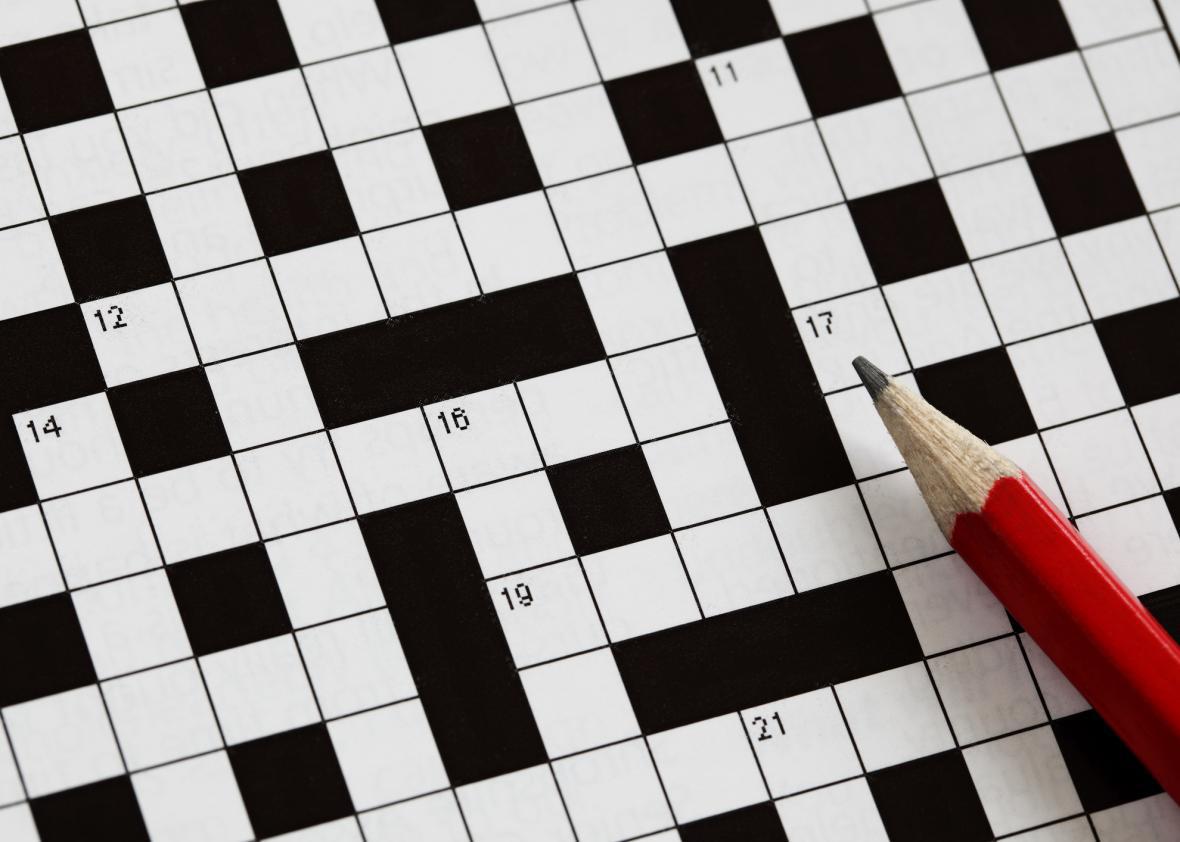The New York Times crossword puzzle is like an elderly uncle: lovable and fun but prone to sounding out of touch. Sometimes that fustiness is charming, like when longtime puzzle editor Will Shortz sparred with writer Julianne Smolinski over the definition of the word Illin’.
But Tuesday’s puzzle includes a clue and answer that many solvers are complaining falls on the uglier end of the spectrum. On today’s grid, 31 Down runs straight through the center of the puzzle. The answer: HAREM. The clue: “Decidedly non-feminist women’s group.” Groan.
Crossword critic and constructor Michael Sharp, who blogs under the name Rex Parker, called it “hateful”:
As another solver put it, the clue “was unnecessary and awful while also managing to be demeaning to both sex workers and women in sex slavery.”
“Hateful” and “awful” may seem a bit harsh for what reads like a lame attempt at cheekiness. But the clue is certainly tone-deaf. And it’s not the first time a puzzle’s un-PC cluelessness has annoyed people. In 2012, the answer ILLEGAL was clued with: “One caught by the border patrol.” The offensive use of illegal as a noun set off a brouhaha that made its way to Univision. In 2013, a national puzzle syndicate apologized for using the clue “Shylock” for the answer JEW. And in November, Shortz issued a mea culpa for the clue “Exasperated comment from a feminist.” Answer: MEN—presumably with an invisible exclamation point and flying sweat out of a Cathy comic.
Insert exasperated comment from a feminist here. The community of crossword creators was dominated by women in the early 20th century, and some have estimated that even in the 1960s and ’70s about half of all Times constructors were women. But according to the crossword statistics site XWord Info, of the 47 most recent constructors for the Times, just 11 are female. The author of today’s puzzle is male, and so is Shortz. The constructors are also overwhelmingly white. “White men unequivocally have most of the visible, paying gigs in puzzledom,” Ben Tausig, an editor who has written about the dearth of women in the industry, told me by email. “Everything from choosing which puzzles to publish to vetting clues is inflected by the ideologies that stem from that fact.”
Crossword constructors are important, but the experts I consulted today all emphasized the importance of editors, who often rewrite clues and are responsible for the overall tone of puzzles. That means the buck stops with Shortz. “I just don’t think he’s particularly sensitive to the current social and political nuances of language,” Sharp told me by email, “especially where women and people of color are concerned.”
In October, Sharp pointed out that the answer HOOD was gratuitously clued “Place with homies.” “Since the NYT crossword has generally demonstrated little to no awareness of black lives, it’s weird to have ‘homies’ keep coming up,” he wrote at the time. “It means that black people are visible in the puzzle, for the most part, only via some street slang that white people picked up 20+ years ago.” A few weeks later, the answer to “Gangsta rap characters” was THUGS, and he went on a tear:
I just stared at the grid, wondering how the NYT can continue to not know that it has a race problem. And a glaring one, at that. Look, white people, please don’t make me explain to you how it looks when a white-produced puzzle for a largely white middle/upper-middle-class audience not only barely acknowledges black people exist, but when it does, only does so via clues gleaned from a cursory (and often dated) understanding of rap and hip-hop. It’s either HOMEYS or THUGS with this damned puzzle. And going to “gangsta rap” for a THUGS clue, however defensible from a strictly literal standpoint, is fucking terrible in the age of #BlackLivesMatter.
If this seem like a disproportionate reaction to a daily brain-teaser for dweebs, consider the role that puzzles play in solvers’ lives. There’s an intimacy that accompanies any such daily ritual, no matter how ephemeral. And then there’s the fact that crossword puzzles deal in authoritative definitions. Crosswords “operate as a public barometer of the value of specific words,” Tausig, editor of the respected American Values Club crossword, told me. “Like dictionaries, but tasked with being more nimble and playful, crosswords suggest equivalency between terms and their definitions. This IS what such-and-such a word means, this IS an accurate way to describe such-and-such a phenomenon.” When solvers sense a gap between their own sensibilities and the puzzle’s, they feel betrayed.
The good news is that, like dictionaries, puzzles evolve over time to reflect the culture. Constructor Elizabeth Gorski told me the field is becoming more diverse again now, at least in terms of gender. And she suggested that’s one way to avoid another HAREM-gate in the future. “The problem with tone-deafness is the person who’s singing (or writing clues) doesn’t hear the sour notes,” she said. “If newspapers want to improve their crosswords, the solution is simple: Hire people who aren’t tone deaf.”
